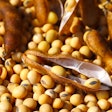Vegetable oils are in such high demand that it is driving investment decisions among grain growers in Western Canada, according to Brent Watchorn, senior vice president for marketing at Canadian grain trader Richardson International. The effects can be seen in the significant increase in canola production from land more traditionally associated with growing wheat.
For feed manufacturers, it has meant more canola meal on the market and an outlook of even greater availability as crush capacities in Canada increase further. Meanwhile, the area for wheat may stabilize, but looks unlikely to recover the reductions of recent years.
The fundamental shift in the Western Canadian landscape away from cereals and towards oilseeds can be explained by a comparison of returns per crop, said Watchorn at the 2012 annual conference of the International Grains Council. Richardson International calculations show canola offering a return of between C$110-150 per acre compared with just C$30-90 for wheat.
It is no surprise, therefore, that canola acres have doubled since 2001. Yields have also shown a large increase, reaching about 24 bushels per acre in 2010 and already nearer to 35 bushels in 2012. Furthermore, the traditional idea of growing canola only once every three years as part of a crop rotation has given way to continuous cropping in successive years at a number of farms. As a result, canola production is now outstripping soybean output by a factor of five to one. The latest data from the Canadian Oilseed Processors Association showed 5.4 million metric tons of canola crushed in Canada in the nine months to May 2012, compared with 1.1 million tons of soybeans.


















